by Susan Flantzer
© Unofficial Royalty 2021
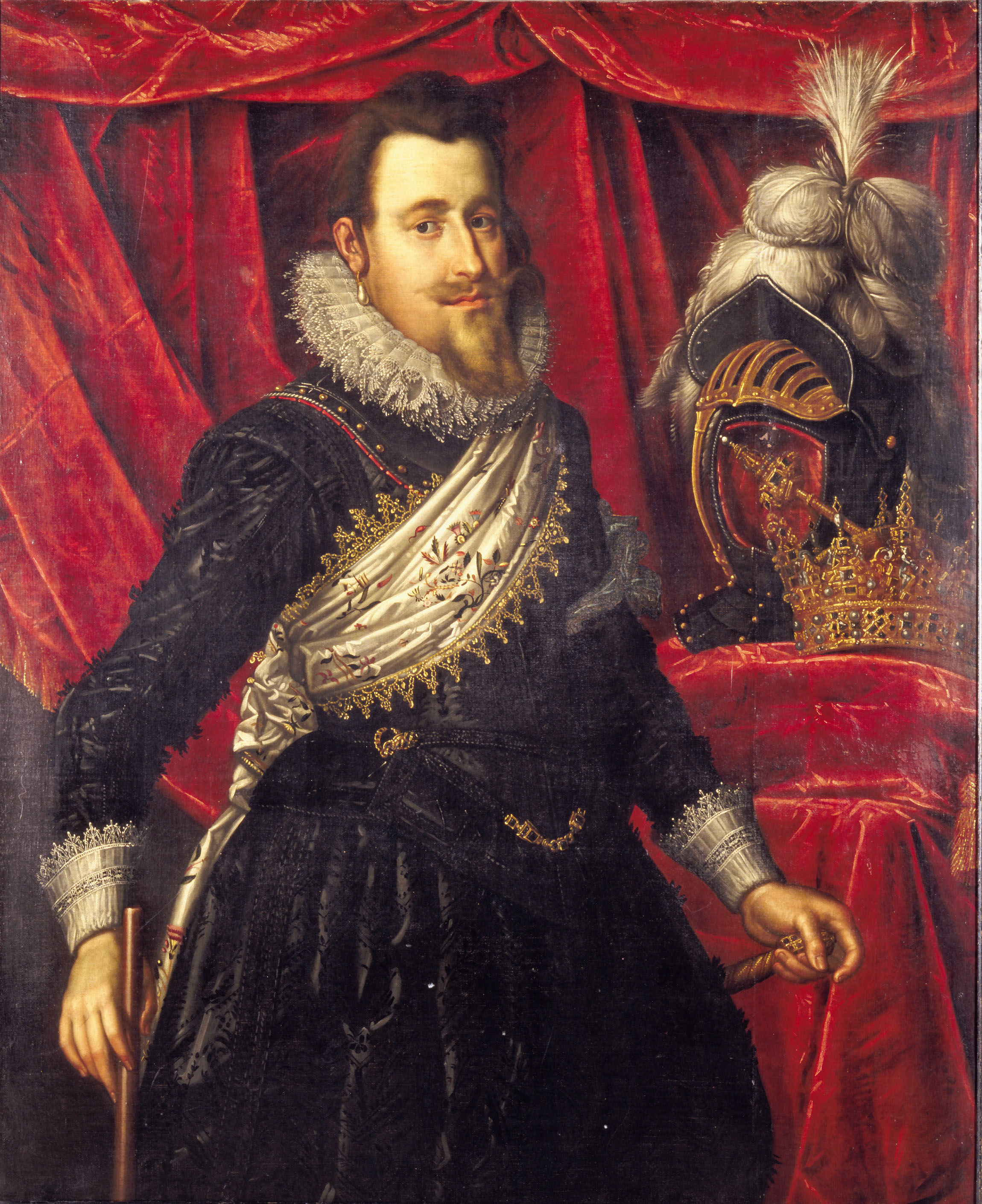
Christian IV, King of Denmark and Norway; Credit – Wikipedia
Having reigned for 59 years, Christian IV, King of Denmark and Norway, is the longest-reigning monarch of Denmark and one of the most beloved. Born on April 12, 1577, at Frederiksborg Castle in Denmark, he was the third child and the eldest son of Frederik II, King of Denmark and Norway and Sophie of Mecklenburg-Schwerin, daughter of Ulrich III, Duke of Mecklenburg-Güstrow and Princess Elizabeth of Denmark, a daughter of Frederik I, King of Denmark and Norway and his second wife Sophie of Pomerania.
Christian IV had six siblings:
- Elizabeth of Denmark, Duchess of Brunswick-Lüneburg (1573 – 1626), married Heinrich Julius, Duke of Brunswick-Lüneburg, had ten children
- Anna (Anne) of Denmark, Queen of Scots and England (1574 – 1619), married James VI, King of Scots, later also James I, King of England, had seven children, including Charles I, King of England
- Ulrik of Denmark, Prince-Bishop of Schwerin (1578 – 1624), married Catherine Hahn-Hinrichshagen, a morganatic marriage, no children
- Augusta of Denmark, Duchess of Holstein-Gottorp (1580 – 1639), married Johann Adolf, Duke of Holstein-Gottorp, had eight children
- Hedwig of Denmark, Electress of Saxony (1581 – 1641), married Christian, Elector of Saxony, no children
- Hans of Denmark, Prince of Schleswig-Holstein (1583 – 1602), unmarried, died in his teens

Coronation of King Christian IV; Credit – Wikipedia
At the time, Denmark was still an elective monarchy, so despite being the eldest son, Christian was not automatically the heir to the throne. However, in 1580, King Frederik II had his three-year-old son Christian elected heir to the throne. Frederik II, King of Denmark and Norway died, aged 53, on April 4, 1588, and eleven-year-old Christian became King of Denmark and Norway. Christian’s thirty-year-old mother Sophie wanted to play a role in the government but was given no role in the regency council set up for her son. In 1596, Christian IV became of age and was crowned on August 29, 1596, at the Church of Our Lady in Copenhagen, Denmark.
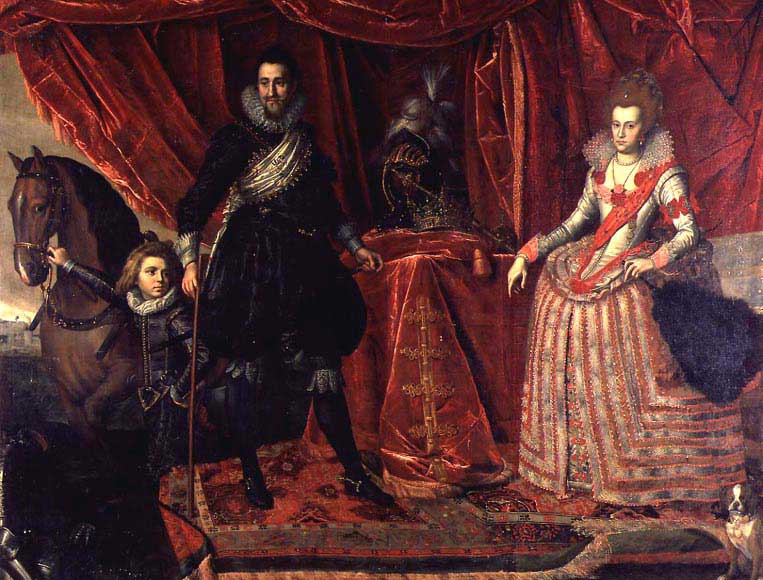
Christian IV of Denmark and his first wife Anna Cathrine of Brandenburg; Credit – Wikipedia
In the autumn of 1595, during a trip through some of the German monarchies, Christian IV met Anna Katharina of Brandenburg, daughter of Joachim Friedrich, Margrave of Brandenburg and his first wife Katharina of Brandenburg-Küstrin, and decided to marry her. Anna Katharina and her parents attended Christian’s coronation in 1596. Christian and Anna Katharina met again in January 1597, and later that year, the marriage contract was signed. The wedding took place on November 27, 1597, at Haderslevhus Castle in Denmark.
Christian IV and Anna Katharina of Brandenburg had six children:
- Prince Frederik (born and died 1599), died in infancy
- Christian, Prince-Elect of Denmark (1603-1647), married Magdalene Sibylle of Saxony, no children, predeceased his father
- Princess Sophie (born and died 1605), died in infancy
- Princess Elisabeth (1606-1608), died in childhood
- Frederik III, King of Denmark and Norway (1609-1670), married Sophie Amalie of Brunswick-Lüneburg, had eight children, including King Christian V of Denmark and Norway, Prince Jørgen (George), who married Queen Anne of Great Britain, and Princess Ulrika Eleonora, who married King Karl XI of Sweden
- Prince Ulrik, Prince-Bishopric of Schwerin (1611-1633), unmarried
Christian IV had affairs during his marriage, and Anna Katharina was aware of them. Her maid of honor Kirsten Madsdatter gave birth to a son the day after Anna Katharina gave birth to her last child. A little more than a year after the birth of her last child, Anna Katharina died on April 8, 1612, at the age of 36, and was buried at Roskilde Cathedral in Roskilde, Denmark.
The surname Gyldenløve, which means Golden Love, was given to the illegitimate children of Christian IV, his son Frederick III, and his grandson Christian V.
Christian IV had the following illegitimate children:
With Kirsten Madsdatter, the chambermaid of Christian’s first wife Anna Cathrine:
- Christian Ulrik Gyldenløve (1611–1640), unmarried, killed in battle
With Karen Andersdatter, mistress from 1613-1616:
- Dorothea Elisabeth Gyldenløve (1613–1615), died in childhood
- Hans Ulrik Gyldenløve (link in Danish) (1615–1645), married Regitze Grubbe, no children
With Vibeke Kruse: the chambermaid of Christian’s second wife Kirsten Munk and Christian’s official mistress from 1629 until he died in 1648:
- Ulrik Christian Gyldenløve (1630–1658), killed in battle
- Elisabeth Sofie Gyldenløve (link in Danish) (1633–1654); married Major-General Claus Ahlefeldt, had one daughter
In 1616, 39-year-old Christian IV became attracted to 18-year-old Kirsten Munk, from a wealthy, untitled noble Danish family. Kirsten’s astute mother did not want her daughter to become Christian’s mistress and instead negotiated a morganatic marriage between Christian and her daughter due to Kirsten’s status as a noble. Kirsten received properties in her name and was assured of a widow’s pension. Christian and Kirsten were married on December 31, 1615, and Kirsten was not the Queen due to the morganatic marriage and was given the title Countess of Schleswig-Holstein. Christian and Kirsten’s stormy marriage ended in divorce in 1630, amid mutual allegations of infidelity and much bitterness, and Kirsten retired to her estates in Jutland.
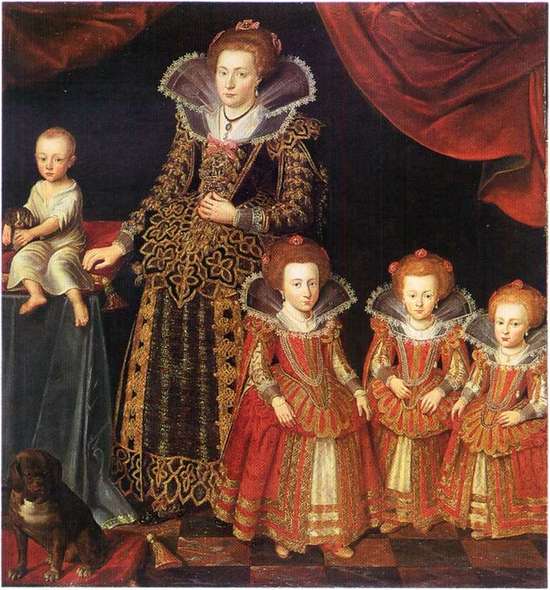
Kirsten Munk with her eldest four children; Credit – Wikipedia
Christian IV and Kirsten’s ten children married into the Danish nobility, were styled Count and Countess of Schleswig-Holstein, but did not have succession rights. Through their daughter Leonora Christine, Christian and Kirsten are the ancestors of Prince Hans Adam II of Liechtenstein and Princess Michael of Kent (born Baroness Marie Christine von Reibnitz) and past monarchs King Simeon II of the Bulgarians, King Michael of Romania, King Peter II of Yugoslavia, King Manuel II of Portugal, Emperor Karl I of Austria-Hungary, King Friedrich August III of Saxony.
- Countess Anne Cathrine of Schleswig-Holstein (1618 -1633), died as a teenager
- Countess Sophie Elisabeth of Schleswig-Holstein (1619- 1657), married Christian von Pentz
- Countess Leonora Christina of Schleswig-Holstein (1621 – 1698), married Count Corfitz Ulfeldt, had ten children
- Count Valdemar Christian of Schleswig-Holstein (1622 – 1656), killed in battle
- Countess Elisabeth Auguste of Schleswig-Holstein (1623 – 1677), married Hans Lindenov
- Count Frederik Christian of Schleswig-Holstein (1625-1627), died in childhood
- Countess Christiane of Schleswig-Holstein, twin of Hedwig (1626 – 1670), married Hannibal Sehested
- Countess Hedwig of Schleswig-Holstein, twin of Christiane (1626 – 1678), married Ebbe Ulfeldt
- Countess Maria Katharina of Schleswig-Holstein (born and died 1628), died in infancy
- Countess Dorothea Elisabeth of Schleswig-Holstein (1629 – 1687), converted to Roman Catholicism and became a nun
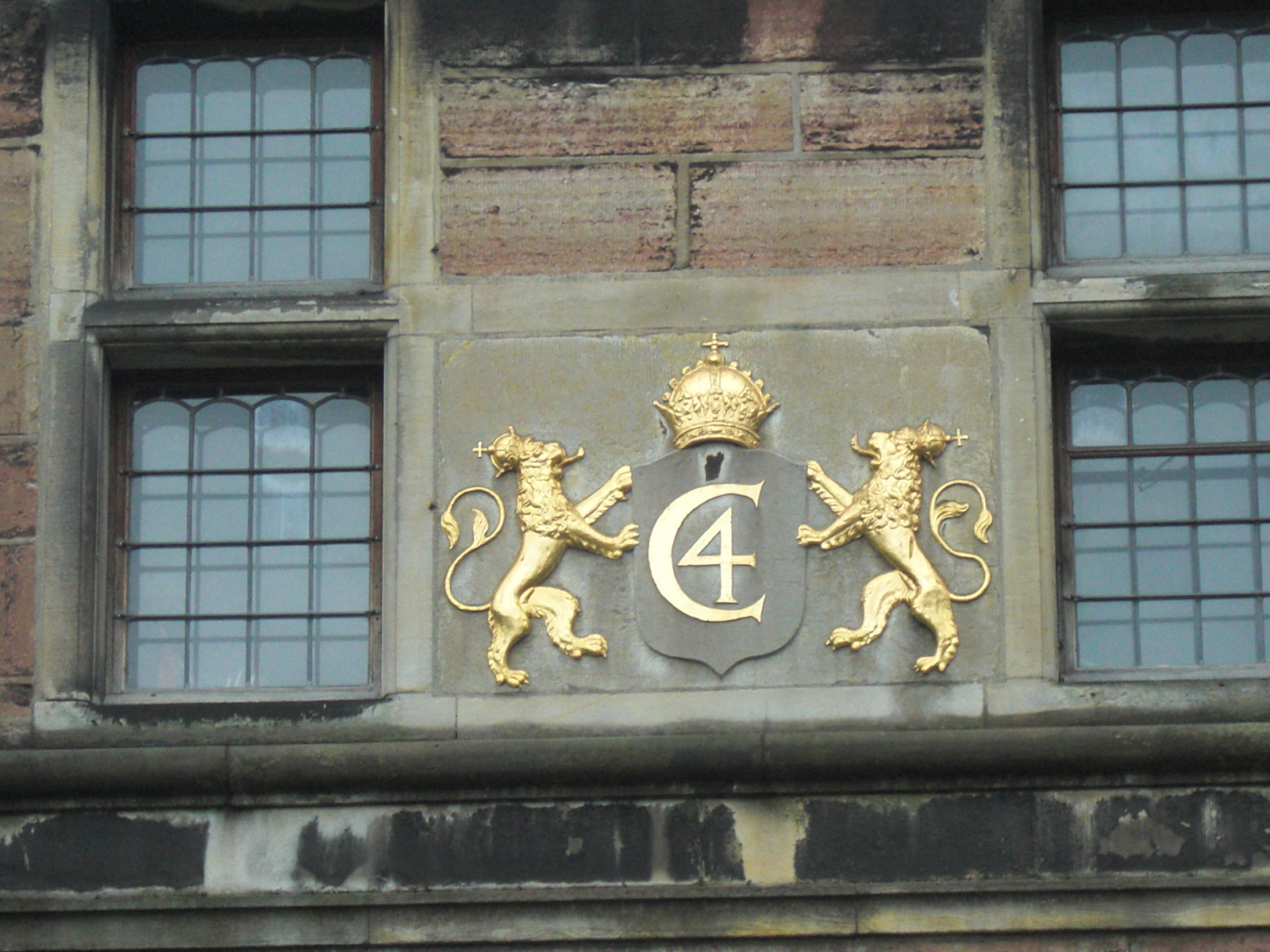
The cipher of King Christian IV at the entrance gate of Rosenborg Castle; Photo Credit – © Susan Flantzer
During his long reign, Christian IV repeatedly and unsuccessfully attempted by military means to make the Kingdom of Denmark and Norway into a great power, especially during the Thirty Years’ War. However, his legacy would be his building projects, and this writer frequently noticed his cipher, C4 (see above photo), on many buildings during a trip to Denmark. Christian converted Frederiksborg Castle into a Renaissance palace and completely rebuilt Kronborg Castle into a fortress. It is through his building that he became a beloved and admired king.
Christian IV is responsible for founding the following cities:
- Christianopel: founded in 1599 as a garrison town in the then Danish territory of Blekinge near the then Danish-Swedish border, now Kristianopel, Sweden
- Christianstad: founded in 1614 in the then Danish territory of Skåne, now Kristianstad, Sweden
- Glückstadt: founded in 1617 as a rival to Hamburg in the then Danish territory of Holstein, now in Germany
- Christianshavn: founded in 1619 as a fortification/garrison town, now part of Copenhagen, Denmark
- Kongsberg: founded in 1624 as an industrial town after the discovery of silver ore, now Kongsberg, Norway
- Christiania: after a devastating fire in 1624, Christian IV ordered the old city of Oslo to be moved closer to the fortification of Akershus Fortress and renamed the city Christiania. The city name went back to Oslo in 1924.
- Christiansand: founded in 1641 to promote trade in southern Norway, now Kristiansand, Norway
- Røros: founded as an industrial town after the discovery of copper ore, now in Norway
In Copenhagen, Christian IV is responsible for the construction of:
- Børsbygningen (Stock Exchange)
- Holmen Church: converted into a naval church, the burial site of naval heroes
- Kongens Bryghus (King’s Brewhouse): originally built as a bastion that was part of Copenhagen’s defense system, in 1618 a brewery was set up in the former bastion, where beer was brewed for the military
- Nyboder: row house district of Royal Danish Navy barracks
- Proviantgården: part of Christian IV’s Arsenal Dock, a naval harbor, used for storing cannons, sails, ropes, food, and other supplies for the navy
- Rosenborg Castle
- Regensen Collegium Domus Regiæ (Royal House’s College)
- Rundetårn (Round Tower): built as an astronomical observatory
- Tøjhus (Arsenal): originally an arsenal in the Arsenal Dock, a naval harbor, it is now the Danish War Museum (Krigsmuseet)
- Trinitatis Church: originally served the students of Copenhagen University

Christian IV on his deathbed; Credit – By Berent Hilwaertz – Own work, Sven Rosborn, 18 June 2011, CC BY-SA 3.0, https://commons.wikimedia.org/w/index.php?curid=19385295
Sensing he did not have a long time to live, Christian IV requested to be brought to his beloved Copenhagen. On February 21, 1648, he was carried in a litter from Frederiksborg Palace to Copenhagen. He died a week later, on February 28, 1648, at Rosenborg Castle, at the age of 70. Christian IV, King of Denmark and Norway was interred at Roskilde Cathedral, the traditional burial site of the Danish royal family in Roskilde, Denmark.
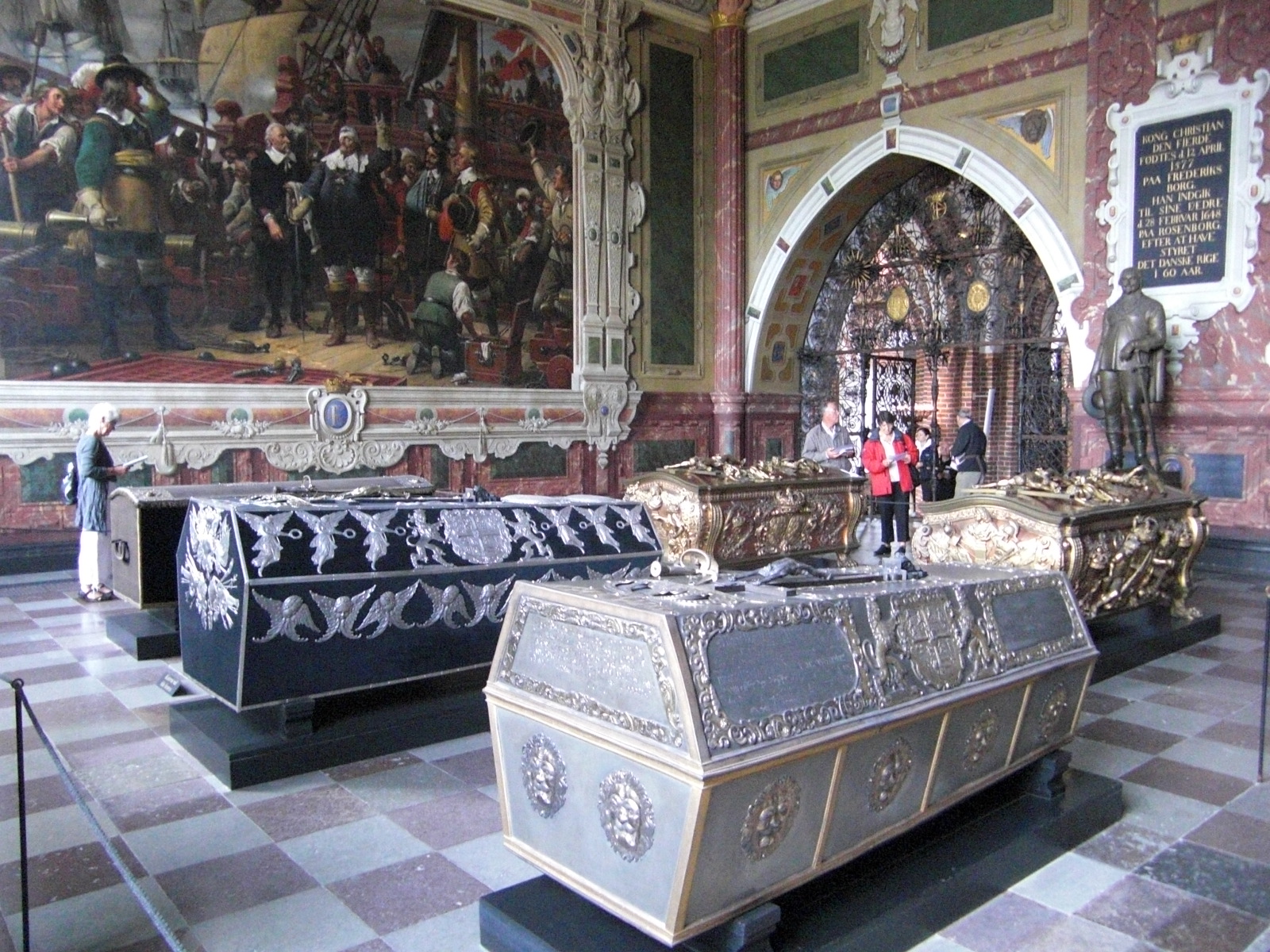
Christian IV Chapel at Roskilde Cathedral: Caskets front row left to right: Anna Katharina, Christian IV, Christian, Prince-Elect; back row left to right: Sophie Amalie of Brunswick-Lüneberg, Frederik III; Photo Credit – © Susan Flantzer
In 1613, a year after the death of his first wife Anna Katharina, Christian IV ordered the construction of a new burial chapel (Christian IV Chapel) because the space inside Roskilde Cathedral for burials was limited. Two older chapels were demolished to make space for the new burial chapel. The exterior of the new chapel was completed by 1641. However, when Christian IV died in 1648, the interior had not been completed, and his coffin was placed in the crypt below. The interior of the chapel was not completed until 1866. Two large paintings illustrating important scenes from Christian IV’s life are on the walls, and a statue of Christian IV watches over the chapel. King Christian IV’s silver-plated casket now stands in the middle of the chapel in addition to the caskets of his first wife Anna Katharina of Brandenburg (died 1612), his eldest son and heir apparent Christian who predeceased him (died 1647); his second son who succeeded him as King Frederik III (died 1670); and Frederik III’s wife Sophie Amalie of Brunswick-Lüneberg (died 1685).
This article is the intellectual property of Unofficial Royalty and is NOT TO BE COPIED, EDITED, OR POSTED IN ANY FORM ON ANOTHER WEBSITE under any circumstances. It is permissible to use a link that directs to Unofficial Royalty.
Kingdom of Denmark Resources at Unofficial Royalty
- Kingdom of Denmark Index
- Danish Orders and Honours
- Danish Royal Burial Sites: House of Oldenburg, 1448 – 1863
- Danish Royal Burial Sites: House of Schleswig-Holstein-Sonderburg-Glücksburg, 1863 – present
- Danish Royal Christenings
- Danish Royal Dates
- Danish Royal Residences
- Danish Royal Weddings
- Line of Succession to the Danish Throne
- Profiles of the Danish Royal Family
Works Cited
- Da.wikipedia.org. 2021. Anna Cathrine af Brandenburg. [online] Available at: <https://da.wikipedia.org/wiki/Anna_Cathrine_af_Brandenburg> [Accessed 25 February 2021].
- Da.wikipedia.org. 2021. Christian 4.. [online] Available at: <https://da.wikipedia.org/wiki/Christian_4.> [Accessed 25 February 2021].
- Da.wikipedia.org. 2021. Kirsten Munk. [online] Available at: <https://da.wikipedia.org/wiki/Kirsten_Munk> [Accessed 25 February 2021].
- En.wikipedia.org. 2021. Anne Catherine of Brandenburg. [online] Available at: <https://en.wikipedia.org/wiki/Anne_Catherine_of_Brandenburg> [Accessed 25 February 2021].
- En.wikipedia.org. 2021. Christian IV of Denmark. [online] Available at: <https://en.wikipedia.org/wiki/Christian_IV_of_Denmark> [Accessed 25 February 2021].
- En.wikipedia.org. 2021. Kirsten Munk. [online] Available at: <https://en.wikipedia.org/wiki/Kirsten_Munk> [Accessed 25 February 2021].
- En.wikipedia.org. 2021. Roskilde Cathedral. [online] Available at: <https://en.wikipedia.org/wiki/Roskilde_Cathedral> [Accessed 25 February 2021].

